Magazine
VR Chennai: Fusing The Past With The Present And The Future
Harsha Bhat
May 04, 2019, 07:49 PM | Updated 07:49 PM IST
Save & read from anywhere!
Bookmark stories for easy access on any device or the Swarajya app.
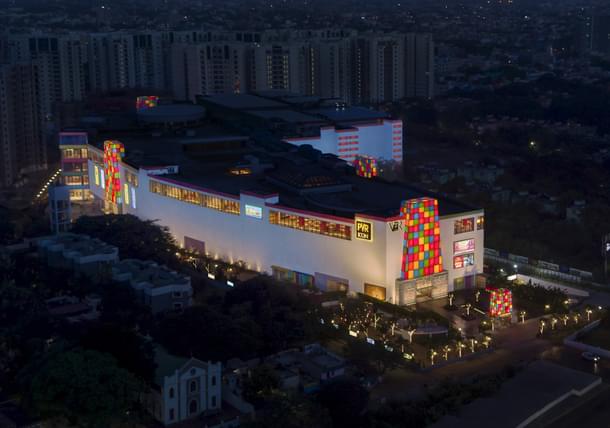
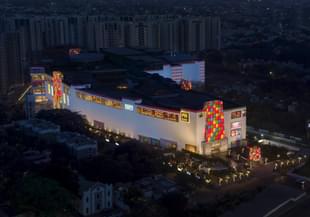
Get aboard a time machine and head back a few decades. Back to the times where weekends meant a trip to a temple town, a visit to a grand old aunt, and vacations meant an entire carnival of cousins that swooped down on the age-old house that had heard more tales than any storyteller could dare tell.
Nostalgic, right?
Temple visits back in the day were not solely religious affairs. Temple complexes and their extended premises were safe havens within which every city fostered various forms of art and culture, commerce and festivities making temples an integral part of everyday life, for the whole community.
But is it possible to carry the treasures of the past & hand them down to the present and the future in a manner that they inherit it gladly? Well, most of ones’ history and heritage today is either conveniently forgotten or relegated to museums and memorials. For, in the times we live in, at least, for most city dwellers, holidays and weekends are primarily spent shopping centre hopping. Shopping destinations these days are large spaces (air conditioned) that one can eat, be entertained, relax and also shop at. The only lacunae are that, that’s where it ends.
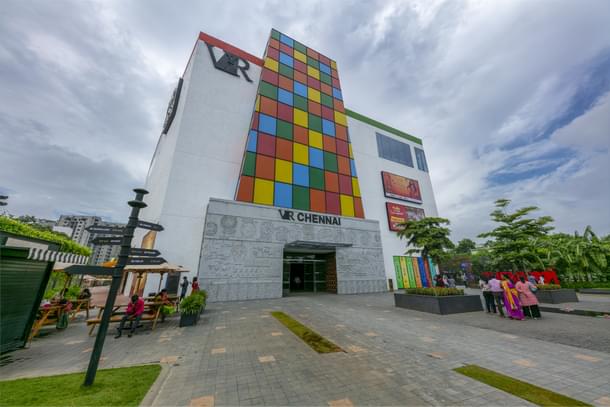
But what if the two eras were to be bridged? What if the treasures that a temple complex offered (minus the deity of course) the ambience, the culture, the timeline, all of it were catapulted into the present and housed in a shopping destination that was located in the heart of your city? Well, VR Chennai, the new community centre in the city, is designed to bridge generations, history and heritage while being a modern, civic locus of the city.
It is an initiative to trans-create all that Chennai has inherited for the present generation - be it with the soaring Gopurams that define the four entries to the Centre, or a series of pillared Mandapams, or Nandi the majestic bull that sits 10 feet tall painted vermillion and speckled in gold standing guard facing the Sanctum Sanctorum, a Peepal tree, or the traditional temple doors at each of the entrances or the traditional oil lamp wall, every corner of VR Chennai traces the rich history and heritage of Southern India.
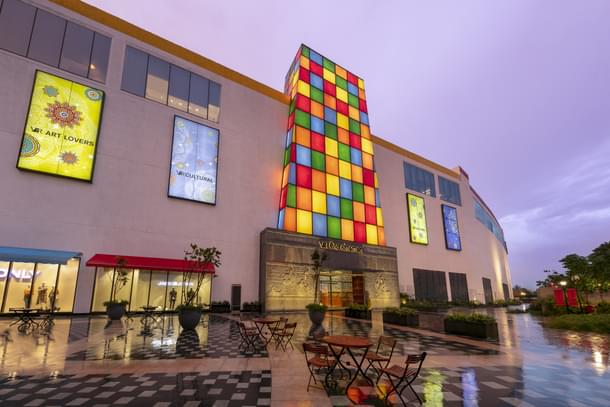
Ask what drove this brave attempt of telling that tale which most would know but few would care to remember, and Siddharth Yog, Founder and Chairman, Virtuous Retail passionately explains:
“The company’s philosophy of “Connecting Communities©” draws from our mission of creating lifestyle centres that bring people together and strengthen social fabric while reflecting local heritage and traditions. The city of Chennai is a fascinating blend of the mighty southern dynasties, the charming Madras of yore and the ambitions of the modern-day city. Hence, providing a magnificent canvas to work on.
The Centre, VR Chennai, intricately weaves together the culture and history of the region through art, architecture & design. The building design, finishes, landscaping, and works of art are all inspired by the city and its traditions and have been curated carefully to develop the overall narrative. We hope this initiative will engage visitors and encourage them to reconnect with the rich heritage of this bustling metropolis.”
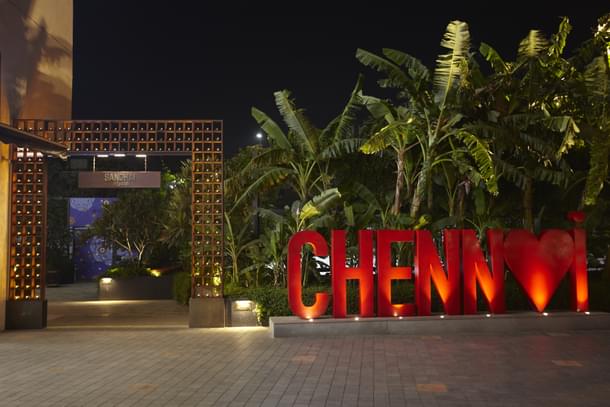
As you enter through the Eastern gate, which is designed as a mini gopuram and adorns the technicolour of the Madras checks, you begin a sojourn into a space that practically transcends time as the ancient and the modern, the lineage and the gen-next all exist in perfect harmony. The finest international, national and local retail brands that act as a backdrop to a large temple Nandi, or mural art that runs alongside posters of the latest trends, the iconic CHENN❤i installation is positioned adjacent to the traditional Diya Wall, are all a testimony to all that Chennai is, has seen and has been.
Every evening at 6 pm, as the sun sets on a simmering Chennai outside, at VR Chennai the Mahadeepam or the large multi-tiered brass oil lamp is lit in a ceremony that is set to a rendition of two of Gandhiji’s favourite bhajans, Raghupati Raghav and Vaishnav Janato, performed by Pandit Ravi Shankar and the Wren Orchestra. As was the tradition in every household back in the day, the lighting of this lamp is believed to usher happiness and prosperity into the space.
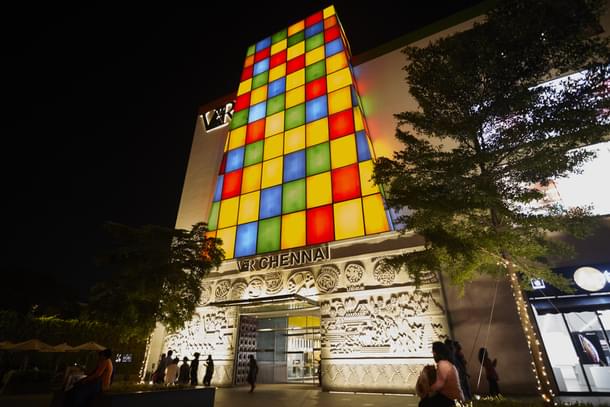
The East and South gates showcase maps, etched on their stone walls. While the former has maps featuring the extent of the various dynasties, the latter shows you what the Madras presidency looked like.

The panchavarna (five coloured) gopurams at all four sides are a modern rendition of the traditional entrances. Each of the four gopurams, one in each cardinal direction takes you through a unique tale of antiquity.
Ulòka Gopuram:
This gopuram facing the east has carvings that take inspiration from the golden era of the various kingdoms of this region. Found here are intricately carved coins and seals of the different rulers, right from the Hoysalas to Chalukyas, the Cheras, the Vijayanagara, to the Pallavas, Pandyas and Kadambas. Also found on the facia of this gopuram are motifs that represent events from different time periods including episodes from the Tamil epic Silappadikaram that depict the achievements of Cheran Senguttavan along with symbols of temples built by the Cholas including the Brihadeeshwara and the Airavateshwara temples of Mahabalipuram. The carvings on Uloka Gopuram illustrate key historic achievements and architectural triumphs as well as the various kingdoms, all of which have played an integral role in shaping the art, culture and beliefs of this region.
Kaliman Gopuram:
As one walks to the right through the oil-lamp wall towards the northern gopuram, the Kaliman gopuram, one notices a long wall that features a timeline of the history of Chennai. While the Gopuram has key events from 1639, to India’s independence the timeline is a wider encapsulation of all that the region endured from 250,000 BCE to present day.
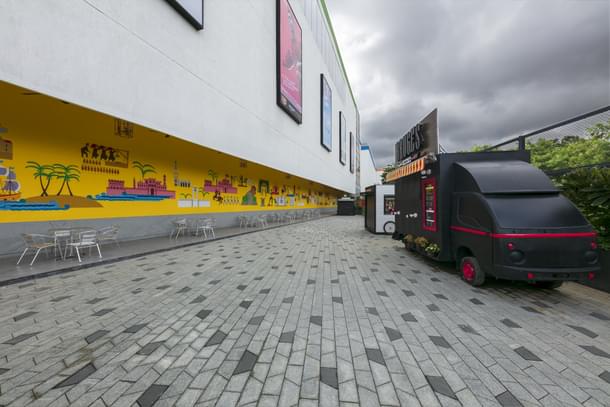
During my visit to VR Chennai with a young friend, the encapsulating narratives that run through the corridors told her much more than the history lessons she took at her school did. Even as she clicked a selfie, she took back at least a thing or two about who she is, where she comes from and what she has inherited. What was even more reassuring was being able to grab a burger or a large bag of fries while walking a young mind through our heritage, captured in a contemporary and relatable format.
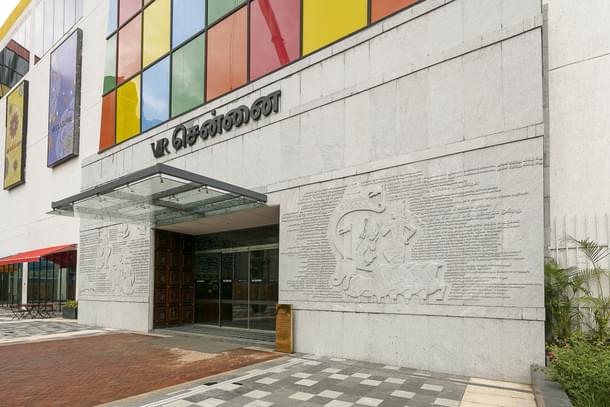
For instance, asking her to read out the verses of ‘Alaipayuthey Kanna’ the famous 18th-century poem by Venkata Kavi, and Bharathiar’s Theeradha Vilayatu Pillai, that are carved on the façade of the Kannadi Gopuram was an interaction that both of us will surely cherish. For here was a 15-year-old attempting to translate for me epic works engraved on a wall and explain what the poet was trying to say even as we planned what to shop for next.
It was literally a stroll to vault between McDonalds and culture, one ‘parikrama’ (Circumambulation) of VR Chennai also showcases the Dasavataram, the 10 primary forms of Lord Vishnu, depicted through various art forms.

The inspiration to bring these tales into the Centre came from an epigraph found in the Adi-Varaha cave temple in Mahabalipuram (erstwhile Mamallapuram, a major city of the ancient Pallava dynasty). Written in “Pallava script” around the 7th century A.D., it marks the earliest known instance of the 10 avatars being mentioned together in one place.
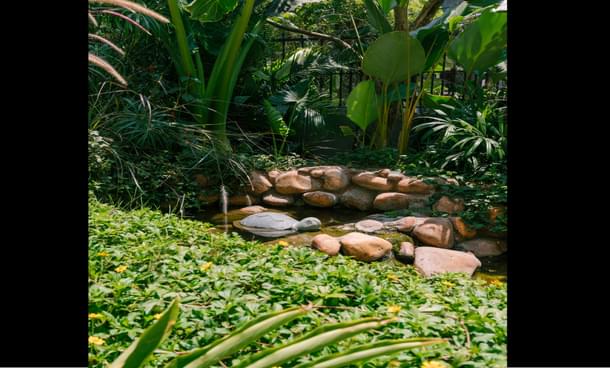
Modern interpretations of the Dasavataram are placed across the Centre. Enriching the installations are the oft-forgotten stories of the Dasavataram themselves. Be it the shallow water pool with the large metal fish in it as one enters through the East Gate, or Krishna as he stands in between those verses engraved in stone, the little ‘Kurma’ (tortoise) in stone which is cooling it off, the water flowing out of the mouth of the Varaha like a fountain head, all woo even those who are least interested.
The avatars that catch one’s eye and imagination the most are Narasimha and Parashuram.
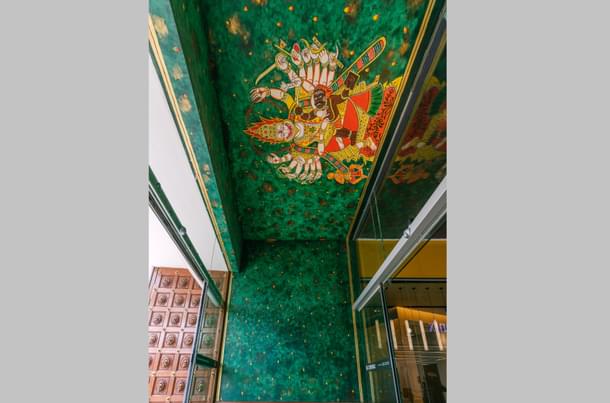
The interpretation of Narasimha remains true to its character of being above all dualities, of being neither on land nor in the sky, neither in nor out. This avatar is portrayed as a mural that depicts the moment Lord Vishnu kills Hiranyakashipu as is found on the ceiling and at the cusp of the entrance, neither inside nor outside, such that a glass door divides it right in between.
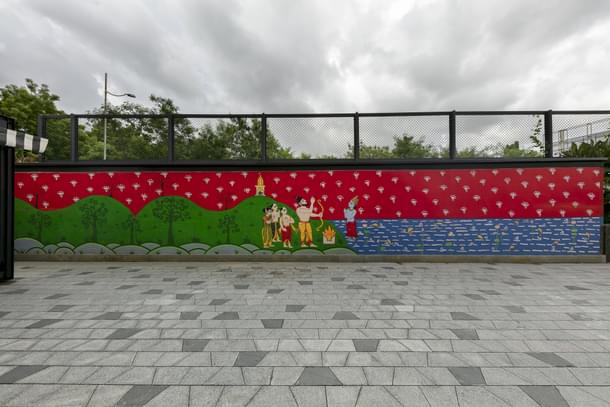
Parashurama, on the other hand, is seen as part of a beautiful hand painted 36 feet long mural that depicts a pivotal moment in his life. Located on the outer precincts on the wall opposite the history timeline, the sixth avatar of Vishnu is seen flinging something. But what? Where is that object he flung? As one pans the eye to look for it, one sees a 10ft long axe, an installation at the other end, where it rests marks, Land’s End.
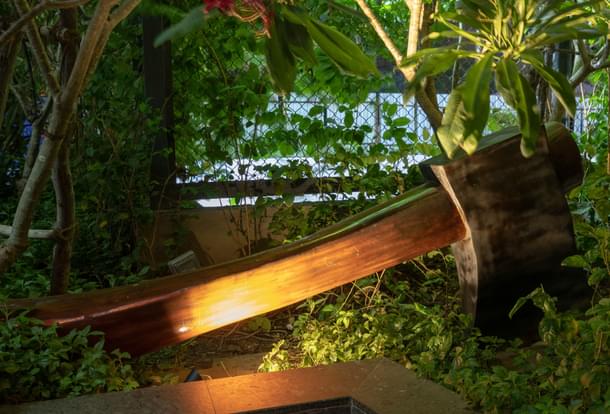
Conceptualized by team VR and crafted by Kalarings Art Studio, the interpretation of this tale - a playful composition that straddles between the 2D and 3D mediums, is both Intriguing and enlightening, to say the least.
Ring a bell?
A temple offers something for all our senses; a bell is its most ornate, ‘loud’ and clear sound ambassador. As one teaches a little child to reach the temple bell and ring it, the joy on the face of the one who just accomplished this feat is unmatched. Here at VR Chennai these large gong bearers are a visual delight found at all four foyers; each houses a unique bell installation crafted from one of four elements integral to this region– metal, wood, glass and earth.

Right from the 150 wooden hand-lathen bells from the ‘thoongal’ or wooden columns recycled from old mansions or the 1001 terracotta bells handcrafted by local potters in the foyer of Kaliman Gopuram, these little sound cells are beautiful and traditional, each telling us a unique story.
In contrast, the large metal bell that has the Dashavataram embellished on it weighs over 400 kg, is 3m in height and diameter, and sits majestically in the double height foyer of Ulòka Gopuram.
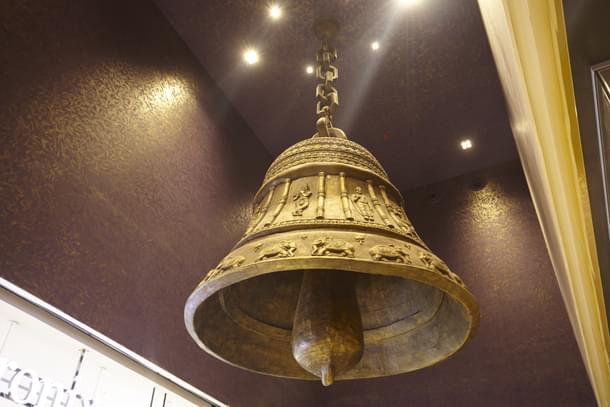
But the most enticing visual and popular ‘selfie’ spot is the Glass Bells installation by Klove Studio. Cascading 22ft in the foyer of Kannadi Gopuram is a multi-tiered arrangement of hand-blown glass baubles of different shapes and designs. This marvellous piece with its central array of gold bells is tinged in blue & green and complements the mural of the Samudra Manthan (the celestial tug of war), that envelopes it.
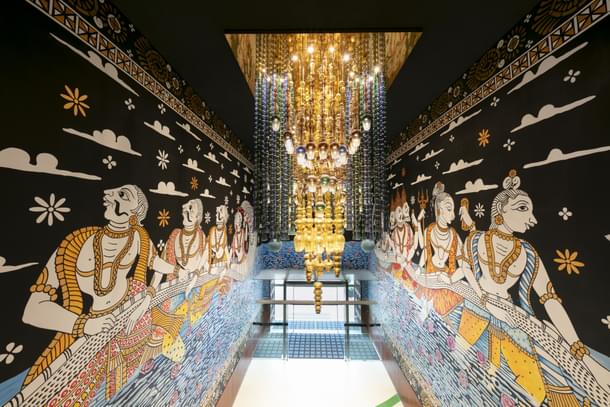
The acrylic paint blend rendering of the ocean churning by the devas and asuras is the magnum opus creation of the Cholamandal Artists’ Village at the Centre. This mammoth work of art runs over 40m in length and is inspired by mural styles found in the temples of the region. It surrounds the Glass Bells in hues of gold giving the impression of drops of divine nectar dropping from the skies. If the description sounds hyperbolic, you should head to VR Chennai and give yourself a quiet moment or two with this piece of fine art.
Even a simple stroll around the Centre is very ‘cooling’ as tiny spaces of water have been planned to ensure a breakaway from the much talked about Chennai heat. Then there is the traditional Peepal tree that has been carefully preserved and integrated with the overall design ethos.
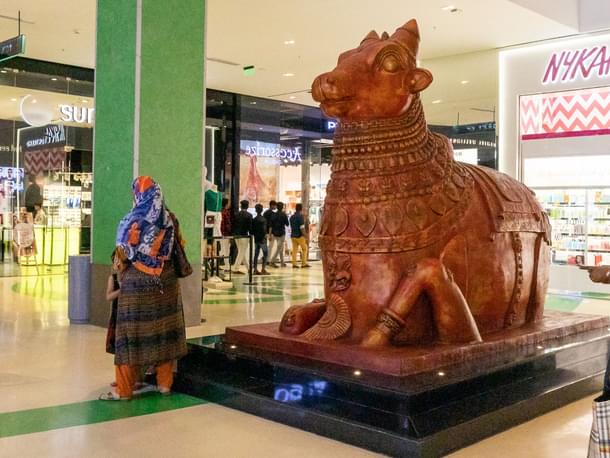
To offer a more informed and enlightening experience, VR Chennai will be conducting a series of Heritage Walks every week, starting 5 May 2019. The Kathai, Kalai, Parampariyam (literally translated as stories, arts and traditions) walks have been designed to take visitors, across age groups, through a narrative of the rich culture and history of this region and showcase the ingenuity and skill of local artists. Now wouldn’t this be an interesting thing to add to your ‘to-do-list for Chennai?
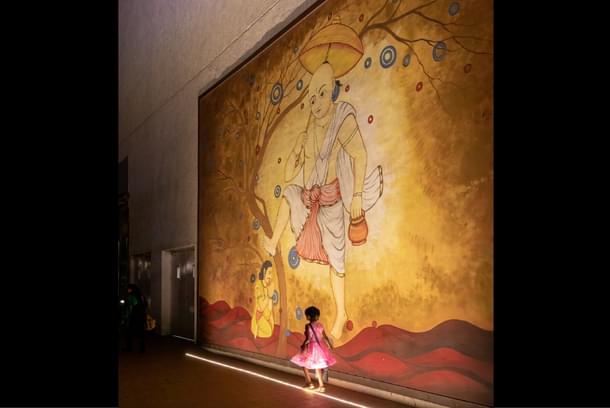
The majestic kingdoms, the mighty memory of Madras, the charm of Chennai, the myth of the people that made it, the culture of the ‘mann’ (soil) has all been painstakingly captured and laid out in the various nooks and corners of VR Chennai, by the team at Virtuous Retail along with artists and artisans from the region. Thousands of man-hours have gone into handcrafting the art and in curating this one-of-a-kind experience, to perfection. So, the next time you are in Chennai (you don’t have to complain its hot, for so is the rest of the country) head here for some ‘Kathai, Kalai, Paramparyam’.
Harsha Bhat is an author, linguist, content strategist, and a compulsive chronicler of Bharat's civilisational heartbeat.





